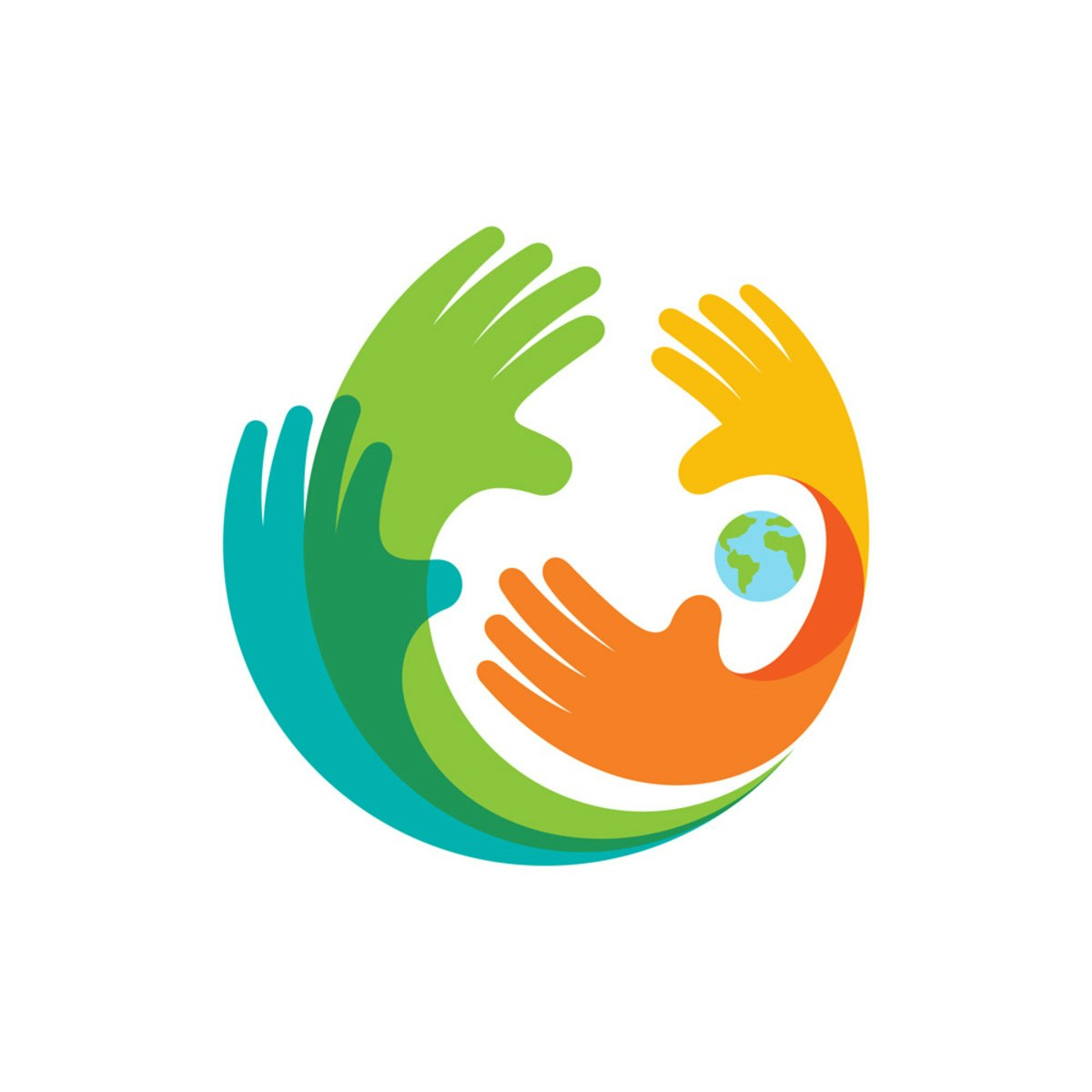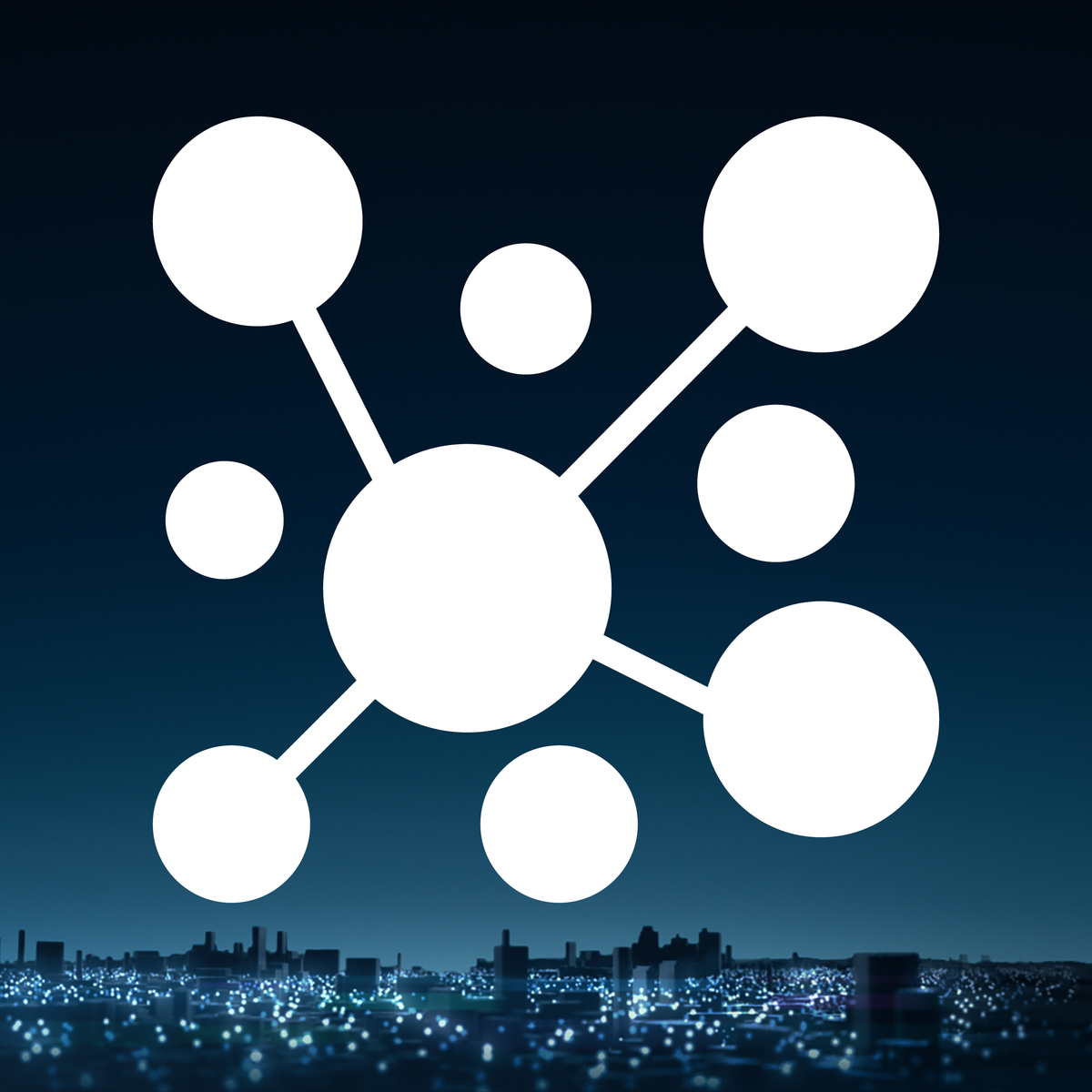Health Disparities
vigating the Landscape of Health Disparities
Health disparities refer to preventable differences in the burden of disease, injury, violence, or opportunities to achieve optimal health that are experienced by socially disadvantaged populations. These disparities are not random; they are often the result of complex, intertwined factors stemming from broader social and economic inequities. Understanding health disparities is crucial because addressing them is not only a matter of fairness and social justice but also a vital step towards improving a nation's overall health and economic well-being.
Working in the field of health disparities can be incredibly engaging. It involves unraveling the complex web of factors that lead to unequal health outcomes, from socioeconomic status and education to race, ethnicity, and geographic location. Professionals in this area often find deep satisfaction in developing and implementing strategies that promote health equity, which is the principle that everyone should have a fair and just opportunity to attain their full health potential. Furthermore, this field is dynamic, with ongoing research and evolving approaches, including the use of technology like artificial intelligence to identify and mitigate disparities.
Introduction to Health Disparities
This section will lay the groundwork for understanding what health disparities are, how the concept has evolved, and how these disparities manifest differently across the globe versus within specific regions.
Defining Health Disparities and Related Concepts
At its core, a health disparity is a type of preventable health difference that is closely linked with social, political, economic, and environmental disadvantage. These differences can manifest in various ways, including variations in life expectancy, mortality rates, the prevalence of diseases, and overall health status among different groups. It's important to distinguish health disparities from general health differences. While some variations in health are due to biological factors, health disparities specifically point to those differences that arise from unequal conditions.
Closely related to health disparities is the concept of health equity. Health equity means that everyone has a fair and just opportunity to be as healthy as possible. Achieving health equity requires removing obstacles to health such as poverty, discrimination, and their consequences, including powerlessness and lack of access to good jobs with fair pay, quality education and housing, safe environments, and healthcare.
Another key term is social determinants of health (SDOH). These are the non-medical factors that influence health outcomes. They are the conditions in which people are born, grow, work, live, and age, and the wider set of forces and systems shaping the conditions of daily life. These forces and systems include economic policies and systems, development agendas, social norms, social policies, racism, climate change, and political systems. Examples of SDOH include socioeconomic status, education level, neighborhood and physical environment, employment, and social support networks, as well as access to healthcare.
To put it simply, imagine two neighborhoods in the same city. In one neighborhood, residents have easy access to fresh, healthy food, safe parks for exercise, good schools, and stable jobs. In the other, residents might live in a "food desert" with limited healthy food options, lack safe places to be active, attend under-resourced schools, and face high unemployment. It's likely that people in the second neighborhood will experience worse health outcomes – not because they are inherently less healthy, but because of the conditions in which they live. These differences in health outcomes, driven by social and economic factors, are health disparities.
These foundational courses can help build a strong understanding of health disparities and their underlying causes.
For further reading on the fundamental concepts, these books are highly recommended.
Historical Context and Evolution of the Concept
The recognition of health disparities is not new; however, the understanding and framing of the issue have evolved significantly over time. Early observations might have focused on differences in disease rates between different socioeconomic classes without fully grasping the systemic nature of these inequities. Over centuries, events and policies, often discriminatory, have laid the groundwork for the disparities we observe today. For instance, historical practices like redlining in the United States, where neighborhoods were systematically denied services based on racial composition, have had lasting negative impacts on health outcomes in those communities.
The formal study and acknowledgment of health disparities as a significant public health concern gained momentum in the latter half ofthe 20th century. Landmark reports, such as the Heckler Report (Report of the Secretary's Task Force on Black and Minority Health) in the U.S. in 1985, brought national attention to the stark differences in health outcomes experienced by minority populations. This report identified six key areas where disparities were particularly pronounced and spurred further research and policy initiatives.
Over time, the concept has broadened from a primary focus on racial and ethnic disparities to encompass inequities based on socioeconomic status, gender, sexual orientation, geographic location, disability status, and other characteristics. There's also a growing understanding that these factors often intersect, meaning individuals can experience multiple layers of disadvantage. The evolution of this concept reflects a deeper societal understanding of how deeply social, economic, and political structures are intertwined with health.
These courses offer insights into the historical and racial aspects of health inequities.
To delve deeper into how historical and ongoing inequities have shaped health, consider this book.
Global vs. Regional Perspectives on Disparities
Health disparities are a global phenomenon, but their specific manifestations and underlying causes can vary significantly between countries and regions. Globally, vast differences in health outcomes exist between high-income and low- and middle-income countries (LMICs). These are often driven by factors like poverty, access to clean water and sanitation, malnutrition, and the prevalence of infectious diseases, which are often exacerbated by limited healthcare infrastructure and resources. International organizations like the World Bank and the World Health Organization (WHO) play crucial roles in tracking these global disparities and supporting initiatives to address them.
Within a single country or region, disparities can also be stark. For example, even in wealthy nations, significant health inequities persist among different population groups. These can be based on race, ethnicity, socioeconomic status, education level, or geographic location (e.g., urban vs. rural). Regional disparities might be influenced by local economic conditions, historical injustices, cultural factors, and the specific policies of local or state governments. For instance, access to healthcare services can differ dramatically between an inner-city neighborhood and a remote rural area within the same country.
Understanding both global and regional perspectives is crucial for developing effective interventions. Global efforts often focus on broad development goals and strengthening health systems in resource-poor settings, while regional approaches may need to be more tailored to the specific social, economic, and cultural contexts of a particular community. The COVID-19 pandemic, for example, highlighted both global inequities in vaccine access and regional disparities in infection rates and outcomes within countries.
These courses offer a broader view on health issues, including global perspectives and the influence of social context.
You may also be interested in these topics to broaden your understanding.
Key Causes and Contributing Factors
Health disparities arise from a complex interplay of various factors. Understanding these root causes is essential for designing effective interventions and policies aimed at achieving health equity. These factors are often interconnected, creating layers of disadvantage for certain populations.
Socioeconomic Factors (Income, Education)
Socioeconomic status (SES), typically measured by income, education, and occupation, is one of the most powerful predictors of health. Individuals with lower incomes and less education consistently experience worse health outcomes and shorter life expectancies compared to those with higher SES. Poverty, for example, limits access to nutritious food, safe housing, quality healthcare, and opportunities for physical activity. This can lead to higher rates of chronic diseases, malnutrition, and exposure to environmental hazards.
Education plays a critical role in shaping health in several ways. Higher levels of education are generally linked to better health literacy, meaning individuals are more equipped to understand health information and navigate the healthcare system. Education also influences employment opportunities and income potential, which in turn affect access to resources that promote health. Furthermore, educational environments themselves can impact health, with under-resourced schools potentially offering fewer health-promoting programs or exposing students to greater stress.
The cumulative effect of socioeconomic disadvantage across a lifespan can create a cycle of poor health. Children growing up in poverty are more likely to experience health problems that can affect their educational attainment and future earning potential, perpetuating the cycle into the next generation. Addressing these socioeconomic determinants often requires policies that go beyond the healthcare sector, such as initiatives to reduce poverty, improve educational opportunities, and ensure fair wages.
These courses examine the link between socioeconomic factors and health.
This book offers a comprehensive look at the impact of social factors on health.
Race, Ethnicity, and Cultural Influences
Significant health disparities persist across racial and ethnic groups. These disparities are not explained by genetic differences but are largely the result of social and economic factors, including the ongoing effects of systemic racism and discrimination. Historically marginalized racial and ethnic groups often experience higher rates of chronic diseases, premature death, and lower quality of healthcare.
Systemic racism, which refers to discriminatory policies and practices embedded in institutions, creates barriers to accessing quality education, employment, housing, and healthcare for certain racial and ethnic groups. Experiences of discrimination, both overt and subtle, can also lead to chronic stress, which has well-documented negative impacts on physical and mental health. Furthermore, implicit biases among healthcare providers can affect the quality of care received by patients from minority groups, leading to misdiagnosis, delayed treatment, or less effective communication.
Cultural factors can also influence health behaviors, beliefs about illness, and interactions with the healthcare system. For example, cultural norms around diet or help-seeking can impact health outcomes. Language barriers can pose significant challenges to accessing and understanding healthcare services for immigrant populations or those with limited English proficiency. Culturally competent healthcare, which involves understanding and respecting the cultural beliefs and practices of patients, is essential for reducing these disparities and providing equitable care.
Consider these courses to learn more about racial and ethnic disparities in health.
Geographic and Environmental Determinants
Where a person lives can significantly impact their health. Geographic disparities in health can be observed between urban and rural areas, as well as between different neighborhoods within the same city. Rural communities, for example, often face challenges such as limited access to healthcare providers and facilities, greater travel distances to care, and fewer economic opportunities.
The physical environment of a neighborhood, often referred to as the "built environment," also plays a crucial role. This includes factors like the availability of sidewalks and bike lanes, access to parks and recreational facilities, housing quality, and exposure to pollution. Neighborhoods with poor infrastructure, high crime rates, or limited access to healthy food retailers (food deserts) can create barriers to healthy living and contribute to poorer health outcomes. Conversely, communities with safe public spaces, good transportation options, and readily available healthy food choices can promote better health.
Environmental exposures, such as air and water pollution, proximity to hazardous waste sites, and the impacts of climate change, also contribute to health disparities. These risks are often disproportionately borne by low-income communities and communities of color due to historical patterns of residential segregation and the siting of polluting industries. Addressing geographic and environmental determinants requires urban planning strategies that promote healthy living, environmental regulations that protect vulnerable communities, and investments in infrastructure in underserved areas.
This course explores how geography influences health.
To understand more about how location affects health, consider this topic.
Healthcare Access and Systemic Barriers
Access to affordable, quality healthcare is a critical determinant of health, yet significant disparities in access persist. Barriers to healthcare access can take many forms. Lack of health insurance coverage is a major obstacle for many, particularly in countries without universal healthcare systems. Even with insurance, high out-of-pocket costs, such as deductibles and copayments, can make care unaffordable for some.
Systemic barriers within the healthcare system itself also contribute to disparities. These can include a shortage of healthcare providers in certain areas, particularly in rural and underserved urban communities. Lack of transportation, inconvenient clinic hours, and long wait times can also make it difficult for people to get the care they need. Communication challenges, such as language barriers or low health literacy, can further hinder effective patient-provider interactions and lead to poorer health outcomes.
Moreover, the quality of care received can vary. Studies have shown that racial and ethnic minorities and individuals with lower socioeconomic status sometimes receive lower quality care, even when they have similar insurance coverage and access to the same facilities. This can be due to factors like implicit bias among providers, poor communication, and a lack of culturally competent care. Addressing these systemic barriers requires multifaceted approaches, including expanding health insurance coverage, increasing the diversity of the healthcare workforce, improving health literacy, and promoting patient-centered, culturally sensitive care models.
These courses discuss access to care and specific health services.
The topic of Health & Medicine offers a broad overview of related subjects.
Measurement and Data Analysis
To effectively address health disparities, we first need to be able to measure them accurately. This involves collecting reliable data, using appropriate metrics, and employing sound analytical methods. Rigorous measurement and analysis are crucial for identifying where disparities exist, understanding their magnitude, tracking progress over time, and evaluating the impact of interventions.
Common Metrics (Mortality Rates, Morbidity Rates)
Several key metrics are commonly used to quantify health disparities. Mortality rates, which measure the number of deaths in a particular population over a specific period, are a fundamental indicator. These can be overall mortality rates or cause-specific mortality rates (e.g., deaths from heart disease or cancer). Comparing mortality rates across different demographic groups (e.g., by race, income, or education level) can reveal significant disparities in life expectancy and survival.
Morbidity rates refer to the prevalence or incidence of diseases and health conditions within a population. Prevalence is the proportion of a population that has a particular condition at a specific point in time, while incidence is the rate of new cases occurring over a defined period. Tracking morbidity rates for conditions like diabetes, asthma, or mental health disorders can highlight which groups are disproportionately affected. Other common metrics include self-reported health status, measures of functional limitation, and rates of health-risk behaviors (e.g., smoking, physical inactivity).
Life expectancy at birth is another widely used summary measure of population health that often reveals stark disparities. It represents the average number of years a newborn can expect to live if current mortality patterns continue. Differences in life expectancy between groups can encapsulate the cumulative impact of various health disadvantages over a lifetime.
These courses delve into population health and the methods used to study it.
For those interested in the study of disease patterns, the topic of Epidemiology is highly relevant.
Data Collection Challenges and Biases
Collecting accurate and comprehensive data to measure health disparities can be challenging. One major hurdle is ensuring that data are collected consistently for all relevant demographic variables, such as race, ethnicity, socioeconomic status, and sexual orientation. Historically, data on smaller minority groups or specific subpopulations may have been limited or aggregated in ways that mask important differences.
Self-reported data, while valuable, can be subject to biases. For example, cultural differences in reporting symptoms or social desirability bias (where individuals respond in ways they perceive as more socially acceptable) can affect the accuracy of survey data. Access to data can also be an issue, with some important information housed in disparate systems that don't easily communicate with each other. Furthermore, privacy concerns must always be carefully balanced with the need for detailed data to identify and address inequities.
Bias in data collection can also arise from how questions are asked or how categories are defined. For instance, if racial or ethnic categories are not inclusive or do not reflect how individuals self-identify, the resulting data may not accurately represent the populations being studied. It is also crucial to be aware of potential biases in how data are interpreted and used, ensuring that findings do not inadvertently perpetuate stereotypes or blame individuals for systemic problems.
This course introduces principles relevant to health research, including data considerations.
Geospatial Mapping of Disparities
Geospatial analysis, often using Geographic Information Systems (GIS), has become an invaluable tool for understanding and visualizing health disparities. By mapping health outcomes (like disease rates or access to care) alongside demographic and environmental data, researchers can identify geographic "hot spots" where disparities are most pronounced. This allows for a more nuanced understanding of how place influences health.
For example, GIS can be used to map the locations of healthcare facilities in relation to underserved populations, highlighting areas with limited access. It can also show the proximity of communities to environmental hazards, such as pollution sources, or to health-promoting resources, like grocery stores with fresh produce or safe parks. Visualizing these patterns can be a powerful way to communicate the extent of disparities to policymakers and the public, and to advocate for targeted interventions.
However, using geospatial data also comes with its own set of challenges. The level of geographic aggregation (e.g., zip codes, census tracts, counties) can impact the findings; using too large an area might mask important local variations. Ensuring the accuracy of location data and protecting individual privacy when dealing with sensitive health information are also critical considerations. Despite these challenges, geospatial mapping provides crucial insights into the spatial dimensions of health inequity.
This course touches upon community health, where geospatial analysis is often applied.
Statistical Models for Disparity Analysis
Sophisticated statistical models are essential for analyzing health disparities and understanding the complex interplay of contributing factors. Simple comparisons of rates between groups can identify the existence of a disparity, but more advanced models are needed to explore why these disparities occur and to what extent different factors contribute. These models can help to control for confounding variables (factors that might distort the relationship between an exposure and an outcome) and to isolate the impact of specific determinants.
Regression analysis, for example, is commonly used to examine the relationship between various social determinants (like income, education, or race) and health outcomes, while adjusting for other factors. Longitudinal studies, which follow individuals or populations over time, can use statistical models to understand how disparities develop and change across the life course. Multilevel modeling techniques allow researchers to analyze data that are hierarchically structured (e.g., individuals nested within neighborhoods, which are nested within cities), providing insights into how both individual-level and contextual factors influence health.
Ethical considerations are paramount when using statistical models to study health disparities. It's crucial that models are not used in ways that stigmatize or blame marginalized groups. The interpretation of statistical findings should always be done with an understanding of the broader social and historical context that shapes health inequities. The goal of such analyses should be to inform interventions that promote health equity, not simply to document differences.
This course introduces scientific approaches that underpin such statistical analyses.
Impact on Population Health Outcomes
Health disparities have profound and far-reaching consequences, not only for the individuals and groups directly affected but also for society as a whole. These impacts are seen in higher rates of chronic illness, reduced life expectancy, and significant economic burdens. Understanding these tangible consequences underscores the urgency of addressing the root causes of health inequity.
Chronic Disease Prevalence in Marginalized Groups
Marginalized populations often bear a disproportionate burden of chronic diseases such as diabetes, heart disease, asthma, and certain types of cancer. For example, data consistently show higher rates of diabetes and its complications among certain racial and ethnic minority groups and individuals with lower socioeconomic status. Similarly, conditions like hypertension (high blood pressure) may be more prevalent or develop earlier in life in these groups.
These disparities in chronic disease are driven by the same complex web of social determinants of health discussed earlier. Limited access to healthy food, fewer opportunities for safe physical activity, greater exposure to stress and environmental toxins, and barriers to quality healthcare all contribute to an increased risk of developing chronic conditions. The lack of timely diagnosis and effective management of these conditions in underserved populations can also lead to more severe complications and poorer long-term health outcomes.
Addressing chronic disease disparities requires comprehensive strategies that tackle both individual risk factors and the underlying social and environmental conditions that create them. This includes promoting healthy lifestyles, improving access to preventive care and disease management programs, and creating community environments that support healthy choices for everyone.
These courses explore factors influencing health behaviors and disease prevalence.
The topic of Health Education is central to addressing chronic disease through behavior change and awareness.
Mental Health Disparities
Mental health conditions, such as depression, anxiety, and substance use disorders, also exhibit significant disparities across different population groups. While the overall prevalence of some mental disorders may be similar across racial and ethnic groups, the consequences and access to care can differ substantially. For instance, individuals from racial and ethnic minority groups are often less likely to receive mental health services, and when they do, the care may be of lower quality or not culturally appropriate.
Factors contributing to mental health disparities include stigma surrounding mental illness (which can be more pronounced in some cultures), lack of access to affordable and culturally competent mental healthcare providers, and distrust of the healthcare system stemming from historical and ongoing experiences of discrimination. Socioeconomic factors like poverty and unemployment, as well as exposure to trauma, violence, and discrimination, are also significant risk factors for poor mental health and can disproportionately affect marginalized communities.
The consequences of untreated or inadequately treated mental health conditions can be severe, impacting an individual's ability to work, maintain relationships, and achieve overall well-being. Addressing mental health disparities requires efforts to reduce stigma, improve access to care (including integrating mental healthcare with primary care), increase the diversity of the mental health workforce, and address the social determinants that contribute to poor mental health.
These courses address mental health from different perspectives, including disparities.
Life Expectancy Gaps
One of the starkest indicators of health disparities is the gap in life expectancy between different population groups. Consistently, individuals from disadvantaged socioeconomic backgrounds and certain racial and ethnic minority groups have shorter average lifespans than their more advantaged counterparts. These gaps can be substantial, sometimes amounting to a difference of many years. For example, in some US cities, life expectancy can differ by as much as 10 to 20 years between residents of affluent neighborhoods and those living in impoverished areas just a few miles away.
These life expectancy gaps are the cumulative result of a lifetime of exposure to unfavorable social, economic, and environmental conditions, as well as unequal access to quality healthcare. Higher rates of infant mortality, chronic diseases, violence, and unintentional injuries in disadvantaged groups all contribute to these disparities. Essentially, the conditions into which people are born, live, learn, work, and age directly shape their chances of living a long and healthy life.
Closing these life expectancy gaps is a central goal of efforts to achieve health equity. This requires addressing the fundamental root causes of health disparities, including poverty, discrimination, lack of educational and economic opportunities, and unsafe environments. It’s a complex challenge that necessitates a multi-sectoral approach, involving not just the healthcare system but also policies related to housing, education, employment, and urban planning.
Economic Costs of Health Inequities
Beyond the profound human cost, health disparities also impose a significant economic burden on society. These costs manifest in several ways. Higher rates of illness and premature death lead to increased healthcare expenditures, including costs for treating preventable conditions and managing complications. In the United States, the economic burden of racial and ethnic health disparities was estimated to be $451 billion in 2018, a substantial increase from previous estimates. Projections suggest that if unaddressed, health inequities could cost the U.S. economy over $1 trillion annually by 2040.
Lost productivity is another major economic consequence. Individuals suffering from poor health are often less able to work, or their productivity is reduced, leading to lower economic output for businesses and the economy as a whole. Premature deaths also result in a loss of potential economic contributions over many years.
Investing in measures to reduce health disparities is therefore not just a social imperative but also an economic one. By improving the health of all populations, societies can reduce healthcare costs, increase workforce productivity, and foster greater economic growth. According to a Deloitte report, improving health equity in the US could add $2.8 trillion to the US gross domestic product by 2040. This highlights the substantial return on investment that can be achieved by creating a more equitable society where everyone has the opportunity to achieve their full health potential.
This course touches upon health systems and management, which are relevant to understanding the economic aspects.
Educational Pathways in Health Equity
For those passionate about tackling health disparities and promoting health equity, numerous educational pathways can equip you with the necessary knowledge and skills. These range from formal degree programs to more flexible online courses and self-directed learning. Pursuing education in this field can be a rewarding journey, opening doors to impactful careers.
If you are considering a career change or are new to this field, it's natural to feel a mix of excitement and perhaps some apprehension. The field of health equity is multifaceted and requires dedication. However, the growing recognition of the importance of this work means there are increasing opportunities to make a real difference. Grounding yourself in a solid educational foundation is a crucial first step. While the path may have its challenges, remember that every piece of knowledge gained and every skill developed brings you closer to contributing to a more just and healthy world. OpenCourser offers a vast library of courses in Health & Medicine that can help you explore various facets of this field.
Undergraduate Programs in Public Health
A bachelor's degree in public health is an excellent starting point for a career focused on health equity. These programs typically provide a broad overview of public health principles, including epidemiology (the study of disease patterns), biostatistics, environmental health, health policy and management, and social and behavioral sciences. Many undergraduate public health programs now incorporate specific coursework on health disparities, social determinants of health, and cultural competency.
Through such programs, students learn to identify health problems in communities, understand the factors that contribute to these problems, and develop strategies for prevention and intervention. Coursework often involves analyzing health data, learning about program planning and evaluation, and understanding the ethical considerations in public health. Internships or practicum experiences are often a key component, providing students with hands-on experience in real-world public health settings. This practical experience is invaluable for applying classroom knowledge and developing professional networks.
An undergraduate degree in public health can prepare you for entry-level positions in local health departments, non-profit organizations, community health centers, and research institutions. It also serves as a strong foundation for graduate studies in public health or related fields like social work, health administration, or public policy. For students exploring their options, browsing courses on OpenCourser can provide a glimpse into the types of subjects covered in public health education.
These introductory courses provide a good foundation for understanding public health and related concepts.
Graduate Studies and Research Opportunities
For those seeking more advanced roles or to specialize in a particular area of health equity, graduate studies are often necessary. A Master of Public Health (MPH) is a common and highly regarded degree in this field. MPH programs offer various concentrations, allowing students to focus on areas like health policy, global health, epidemiology, community health sciences, or health promotion. Many programs have a strong emphasis on addressing health disparities and promoting health equity within their curriculum.
Other relevant master's degrees include a Master of Science (MS) in fields like epidemiology or health services research, a Master of Health Administration (MHA), or a Master of Social Work (MSW) with a focus on health. For individuals interested in a research-intensive career or academia, doctoral programs such as a Doctor of Philosophy (PhD) in public health, sociology, or a related discipline, or a Doctor of Public Health (DrPH), are common pathways. These programs involve rigorous research training, including advanced statistical methods, research design, and grant writing.
Graduate studies often provide significant opportunities for research, working alongside faculty on projects addressing real-world health disparities. This can involve collecting and analyzing data, contributing to publications, and presenting findings at conferences. Such experiences are crucial for developing expertise and making original contributions to the field. Many universities and research institutions also offer post-doctoral fellowships for further specialized research training after completing a doctoral degree.
These courses can offer a taste of graduate-level thinking in public health and research.
Certifications and Continuing Education
For professionals already working in healthcare, public health, or related fields, as well as for those looking to enhance their credentials without committing to a full degree program, certifications and continuing education courses can be valuable. Several organizations offer certifications in areas relevant to health equity, such as cultural competence, health education, or public health informatics.
Many universities and professional organizations also provide continuing education courses, workshops, and webinars on topics related to health disparities, social determinants of health, and health equity. These can be a great way to stay updated on the latest research, best practices, and policy developments in the field. Online platforms like OpenCourser are excellent resources for finding such courses, allowing for flexible learning that can often be balanced with work and other commitments. The OpenCourser Learner's Guide provides tips on how to effectively use online courses for professional development.
These shorter educational opportunities can help professionals deepen their understanding of specific aspects of health equity, acquire new skills (such as data analysis or program evaluation), and demonstrate a commitment to addressing these critical issues. For those transitioning into the field, these can also be a way to build foundational knowledge and explore specific areas of interest before pursuing more extensive education.
These courses are suitable for continuing education and building specific skills.
Self-Directed Learning Resources
Beyond formal education, a wealth of resources is available for self-directed learning about health disparities and health equity. Numerous books, academic journals, government reports, and publications from non-profit organizations delve into various aspects of this field. Following reputable sources and thought leaders on social media can also provide current insights and perspectives.
Online courses, including many free or low-cost options available through platforms searchable on OpenCourser, offer structured learning on specific topics. These can range from introductory overviews of health disparities to more specialized courses on topics like racial bias in healthcare, global health equity, or community-based participatory research. Learners can curate their own learning paths by selecting courses that align with their interests and career goals. The "Save to list" feature on OpenCourser can be particularly helpful for organizing and revisiting interesting courses or books.
Engaging with advocacy groups, attending public lectures or webinars, and volunteering with organizations working on health equity issues can also be powerful learning experiences. These activities provide opportunities to learn from those directly impacted by disparities and from practitioners working on the front lines. A commitment to lifelong learning is essential in this ever-evolving field, and self-directed learning plays a crucial role in staying informed and effective.
OpenCourser is an excellent platform for finding self-directed learning resources. You can easily search for courses and books on health equity and related topics to build your knowledge base at your own pace.
These books offer valuable insights for self-directed learning.
Career Opportunities and Professional Development
A commitment to addressing health disparities can lead to a wide array of fulfilling career paths across various sectors. Professionals in this field work to understand the root causes of health inequities and to develop, implement, and evaluate strategies that promote health equity for all populations. The demand for individuals with expertise in health equity is growing as awareness of its importance increases.
If you are contemplating a career in this area, or are in the early stages of your journey, it's important to recognize that the work can be both challenging and immensely rewarding. The problems are complex and deeply entrenched, requiring persistence, creativity, and collaboration. However, the opportunity to contribute to meaningful social change and improve the well-being of communities can be a powerful motivator. Be prepared for a path that requires continuous learning and adaptation, but also offers profound personal and professional growth. The Career Development section on OpenCourser might offer additional resources as you explore these paths.
Roles in Public Health Organizations
Public health organizations at the local, state, national, and international levels are major employers of professionals dedicated to health equity. Roles within these organizations can vary widely. For example, epidemiologists might analyze data to identify and monitor health disparities. [0667he] Health educators develop and implement programs to promote healthy behaviors in underserved communities. [y2koii] Program coordinators and managers oversee initiatives aimed at specific health issues or populations, ensuring that these programs are designed and delivered in an equitable manner. [32cggs]
Public health nurses often work directly with communities, providing care and connecting individuals with resources, with a particular focus on vulnerable populations. [tasxqm] Other roles might involve community outreach, health communication, or emergency preparedness, all with an eye toward ensuring that the needs of diverse populations are met. Many public health organizations also have dedicated offices or departments focused specifically on health equity or minority health, which spearhead efforts to integrate equity considerations across all programs and policies.
Working in a public health organization often provides opportunities to make a broad impact on population health. It requires skills in data analysis, program planning and evaluation, community engagement, and understanding of public health policy. Information on such roles can often be found on the career pages of organizations like the Centers for Disease Control and Prevention (CDC) or local and state health departments.
These courses can provide foundational knowledge for roles in public health organizations.
Consider exploring these related careers:
Policy Analysis and Advocacy Positions
Policy plays a critical role in shaping the social determinants of health and can either perpetuate or mitigate health disparities. Professionals in policy analysis and advocacy work to influence laws, regulations, and governmental actions to promote health equity. This can involve conducting research to understand the health impacts of existing or proposed policies, developing policy recommendations, and advocating for these recommendations to legislators and other decision-makers.
Health policy analysts might work for government agencies, legislative bodies, research institutions (think tanks), non-profit advocacy organizations, or consulting firms. [aspjuy] Their work often involves analyzing complex data, understanding legal and regulatory frameworks, and communicating findings effectively to diverse audiences. Advocacy roles can range from grassroots organizing and community mobilization to direct lobbying and media engagement. These positions require strong analytical, communication, and persuasive skills, as well as a deep understanding of the political process.
A career in policy analysis or advocacy can be a powerful way to address the systemic root causes of health inequities. It requires a commitment to social justice and the ability to navigate complex political landscapes. Educational backgrounds in public health, public policy, law, economics, or political science are common in these roles.
This course can provide insights into policy and advocacy work.
This career path is directly relevant to policy work.
The topic of Public Policy offers a broader view of this field.
Community Health Worker Programs
Community Health Workers (CHWs) are trusted members of the communities they serve and act as a vital link between health and social services and the community. [my3xgf] They play a crucial role in addressing health disparities by helping individuals navigate complex systems, access resources, adopt healthy behaviors, and manage chronic conditions. CHWs often share the ethnicity, language, socioeconomic status, and life experiences of the community members they work with, which enables them to build strong relationships and provide culturally appropriate support.
CHWs work in a variety of settings, including community health centers, hospitals, public health departments, non-profit organizations, and faith-based groups. Their responsibilities can include providing health education, assisting with appointment scheduling and transportation, connecting individuals to social services (like housing or food assistance), advocating for patients' needs, and providing informal counseling and social support. They often work with underserved and marginalized populations who face significant barriers to accessing care and achieving good health.
The role of CHWs is increasingly recognized as a key strategy for reducing health disparities and improving health outcomes. Many states and organizations are investing in CHW programs and developing pathways for training and certification. A career as a CHW can be incredibly rewarding for individuals who are passionate about serving their communities and making a direct impact on people's lives. It typically requires strong interpersonal and communication skills, empathy, and a deep understanding of the community's culture and needs.
This course emphasizes community engagement, a core skill for CHWs.
This career is central to community-based health equity efforts.
Leadership Roles in Healthcare Institutions
Healthcare institutions, such as hospitals, clinics, and health systems, are increasingly recognizing the need to address health equity within their own operations and in the communities they serve. This has led to the creation of leadership roles focused on diversity, equity, and inclusion (DEI), as well as positions specifically dedicated to reducing health disparities and improving population health.
Individuals in these roles might be responsible for developing and implementing strategies to improve access to care for underserved populations, ensuring culturally competent care delivery, collecting and analyzing data on health disparities, and partnering with community organizations to address social determinants of health. They may also lead efforts to diversify the healthcare workforce and create a more inclusive environment for both patients and staff. Titles for these positions can vary, including Director of Health Equity, Chief Equity Officer, or Vice President of Community Health.
These leadership roles require a combination of clinical or administrative experience, a strong understanding of health equity principles, and skills in strategic planning, change management, and collaboration. They offer the opportunity to drive institutional change and embed health equity into the core mission and operations of healthcare organizations. Advanced degrees in health administration, public health, medicine, or nursing, along with significant experience, are typically required for these positions.
This course covers aspects of managing population health within healthcare systems.
This career path is relevant to leadership in healthcare settings focused on health programs.
Ethical Considerations in Addressing Disparities
The pursuit of health equity is inherently an ethical endeavor. However, the process of identifying, understanding, and intervening to reduce health disparities is fraught with complex ethical considerations. Navigating these dilemmas thoughtfully is crucial to ensure that efforts to promote equity are themselves just, respectful, and effective.
Equity vs. Equality Debates
A fundamental ethical consideration revolves around the distinction between equity and equality. Equality generally means treating everyone the same or giving everyone the same resources. Equity, on the other hand, means giving everyone what they need to be successful, recognizing that different individuals and groups may require different levels or types of support to achieve similar outcomes.
In the context of health, an equality-based approach might provide the same healthcare services to everyone. However, if some groups face greater barriers to accessing those services (e.g., due to poverty, lack of transportation, or language differences) or have greater health needs due to historical disadvantage, an equal approach may not lead to equal health outcomes. An equity-based approach, conversely, would involve allocating resources and designing interventions in a way that addresses these underlying disadvantages and aims to give everyone a fair opportunity to achieve their optimal health.
The debate often arises in how resources are allocated. Prioritizing resources for historically disadvantaged groups to close health gaps might be seen by some as unfair to other groups. However, proponents of an equity approach argue that it is ethically necessary to address past and present injustices that have created these disparities in the first place. This requires a careful balancing of principles and a commitment to fairness that acknowledges differential needs.
This course touches on the foundational concepts that inform these debates.
The topic of Social Sciences provides broader context for understanding societal structures relevant to equity.
Cultural Competence in Healthcare Delivery
Providing culturally competent healthcare is an ethical imperative in addressing health disparities. Cultural competence involves healthcare providers and systems understanding and respecting the cultural beliefs, values, and practices of diverse patient populations and adapting care delivery to meet their social, cultural, and linguistic needs. Lack of cultural competence can lead to misunderstandings, mistrust, poor communication, and ultimately, poorer health outcomes for patients from diverse backgrounds.
Ethical challenges can arise in situations where a patient's cultural beliefs conflict with standard medical recommendations. Providers must navigate these situations with sensitivity, seeking to understand the patient's perspective and find common ground for shared decision-making. This requires more than just awareness of different cultures; it involves self-reflection on one's own biases, a willingness to learn from patients, and skills in cross-cultural communication.
Healthcare organizations have an ethical responsibility to promote cultural competence by providing training for staff, ensuring access to language services (like interpreters), and creating a welcoming and inclusive environment for all patients. It also involves diversifying the healthcare workforce to better reflect the populations served, as providers from similar cultural backgrounds may be better equipped to understand and address the specific needs of their patients.
These courses address issues related to culture and diversity in healthcare settings.
Informed Consent in Marginalized Communities
The principle of informed consent, which requires that patients have sufficient information to make autonomous decisions about their medical care and participation in research, takes on particular ethical significance when working with marginalized communities. Historically, some marginalized groups have been subjected to unethical research practices or have had medical decisions made for them without their full understanding or consent. This history can lead to justifiable mistrust of the healthcare and research establishments.
Ensuring truly informed consent in these communities requires more than simply providing a consent form. It involves building trust, communicating information in a clear, understandable, and culturally appropriate manner (including addressing language barriers and health literacy levels), and ensuring that individuals do not feel coerced or unduly influenced to participate. Researchers and healthcare providers must be particularly sensitive to power dynamics and ensure that community members are treated as partners in the decision-making process.
Ethical review boards (IRBs) play a critical role in overseeing research involving human subjects and ensuring that informed consent processes are robust and ethical. For healthcare delivery, fostering shared decision-making, where patients and providers work together to make treatment choices based on clinical evidence and the patient's values and preferences, is key to upholding autonomy.
This course discusses research principles, which include ethical consent.
Resource Allocation Ethics
Decisions about how to allocate scarce healthcare resources – whether it's funding for programs, availability of treatments, or deployment of personnel – are laden with ethical implications, especially in the context of health disparities. When resources are limited, choices must be made about who gets what, and these choices can either exacerbate or mitigate existing inequities.
Ethical frameworks for resource allocation often consider principles like utility (maximizing overall health benefits), justice (fair distribution of resources), and efficiency (achieving the best outcomes with available resources). However, applying these principles can be complex. For example, should resources be directed towards interventions that benefit the largest number of people, or towards those that address the needs of the most disadvantaged, even if the latter group is smaller? Should priority be given to preventive services that yield long-term benefits, or to acute care for those already sick?
Transparency and public engagement are crucial in making ethical resource allocation decisions. Involving community members, especially those from marginalized groups, in discussions about priorities can help ensure that decisions reflect societal values and address the most pressing needs. Addressing health disparities often requires a deliberate and sometimes challenging reallocation of resources to counteract historical underinvestment in certain communities or services.
This course provides a framework for thinking about population health, which inherently involves resource allocation considerations.
For a deeper dive into the principles guiding healthcare resource decisions, consider exploring the topic of Health Policy.
Global Perspectives on Health Equity
Health disparities are not confined by national borders; they are a global concern requiring international attention and collaboration. While the specific nature of inequities varies, the underlying principles of fairness and the right to health are universal. Examining health equity from a global lens reveals interconnected challenges and highlights the need for cooperative solutions.
Comparative Analysis of National Healthcare Systems
Comparing national healthcare systems offers valuable insights into how different approaches to financing, organization, and delivery of care can impact health equity. Countries vary widely in their healthcare models, from largely private, market-based systems to publicly funded, universal coverage systems. Analyzing these differences can help identify policies and practices that are more or less effective in reducing disparities in access and outcomes.
For instance, studies might compare how different countries ensure access for low-income populations, manage chronic diseases, or provide care in rural and remote areas. Factors such as the comprehensiveness of benefits packages, the level of out-of-pocket costs, the emphasis on primary and preventive care, and the mechanisms for addressing social determinants of health can all influence a system's ability to promote equity. However, direct comparisons can be complex due to differences in cultural contexts, economic development, and historical trajectories.
Learning from the successes and failures of other countries' healthcare systems can inform domestic policy debates and spur innovation. International organizations often facilitate such comparative analyses, providing data and platforms for sharing best practices. The goal is not necessarily to replicate one system in another context, but to understand the principles and mechanisms that contribute to more equitable health outcomes globally.
This course offers a global perspective on health challenges.
International Aid and Health Diplomacy
International aid and health diplomacy play significant roles in addressing global health disparities, particularly in low- and middle-income countries (LMICs). Donor countries, international organizations (like WHO, UNICEF, World Bank), philanthropic foundations, and non-governmental organizations (NGOs) provide financial and technical assistance to strengthen health systems, combat specific diseases (like HIV/AIDS, tuberculosis, and malaria), and improve maternal and child health in resource-limited settings.
Health diplomacy involves using health as a tool for foreign policy and international cooperation. This can include collaborating on global health security initiatives (e.g., pandemic preparedness), sharing expertise and technology, and advocating for health as a human right on the global stage. Effective international aid and diplomacy require a commitment to partnership, local ownership, and sustainability, ensuring that interventions are aligned with national priorities and contribute to building long-term capacity within recipient countries.
However, international aid efforts are not without ethical challenges. Concerns can arise regarding the priorities set by donors versus the needs identified by recipient countries, the potential for aid to create dependency, and the need for greater accountability and transparency in how funds are used. Ensuring that aid effectively contributes to health equity requires careful planning, robust monitoring and evaluation, and a focus on addressing the systemic issues that underpin poor health.
The following book may offer insights into partnerships for health, which is relevant to international aid.
The University of Michigan's Center for Global Health Equity is an example of an institution engaged in collaborative projects in LMICs.
Pandemic Response Disparities
Global pandemics, such as COVID-19, have starkly illuminated and often exacerbated existing health disparities both within and between countries. During a pandemic, vulnerable populations – including older adults, individuals with pre-existing health conditions, low-income communities, racial and ethnic minorities, and those living in crowded conditions – often face higher risks of exposure, severe illness, and death.
Disparities in pandemic response can manifest in many ways: unequal access to testing, treatment, and vaccines; disproportionate economic impacts due to lockdowns and job losses; and increased barriers to accessing routine healthcare services. Globally, "vaccine nationalism," where wealthier countries secure large quantities of vaccines for their own populations, has highlighted inequities in access for LMICs. Within countries, existing social and economic disadvantages often mean that marginalized communities are less able to protect themselves and recover from the impacts of a pandemic.
Lessons learned from pandemic response disparities underscore the critical need for health equity to be a central component of all preparedness and response planning. This includes ensuring equitable distribution of resources, targeted communication and outreach to vulnerable populations, addressing social determinants that increase risk, and strengthening public health infrastructure in all communities. International cooperation is also essential for an effective global response to pandemic threats.
This course covers disease screening, a key component of pandemic response.
Climate Change and Health Equity
Climate change is increasingly recognized as a major global health threat, and its impacts are not evenly distributed. Marginalized and vulnerable populations, particularly in LMICs and in disadvantaged communities within wealthier nations, are often the most exposed to the health risks of climate change and have the fewest resources to adapt. These risks include heat stress, respiratory illnesses due to worsening air pollution, vector-borne diseases (like malaria and dengue fever, as mosquito habitats expand), food and water insecurity due to droughts and floods, and mental health impacts from displacement and loss of livelihoods.
Addressing the intersection of climate change and health equity requires a dual approach: mitigating climate change by reducing greenhouse gas emissions, and adapting to its unavoidable impacts in ways that protect the most vulnerable. This includes building climate-resilient health systems, strengthening early warning systems for climate-related health threats, and integrating health considerations into climate change policies and vice versa.
The fight for climate justice is closely linked to the fight for health equity. Solutions must prioritize the needs and voices of those most affected and ensure that the transition to a green economy is just and equitable, creating new opportunities and not leaving vulnerable communities behind. International agreements and national policies need to incorporate health equity as a core principle in all climate action.
While not directly about climate change, understanding social determinants is key to grasping its unequal health impacts.
The topic of Sustainability provides broader context for issues related to climate change and environmental health.
Emerging Trends and Future Directions
The field of health equity is constantly evolving, with new challenges, innovative approaches, and technological advancements shaping its future. Staying abreast of these emerging trends is crucial for professionals dedicated to reducing health disparities and creating a healthier, more equitable world. The coming years promise both exciting opportunities and complex hurdles.
AI Applications in Disparity Reduction
Artificial intelligence (AI) is emerging as a powerful tool with the potential to help identify, understand, and even reduce health disparities. AI algorithms can analyze vast amounts of data – from electronic health records and public health datasets to social media and environmental information – to detect patterns and predict risks associated with health inequities. For example, AI could help identify communities at high risk for certain diseases based on a combination of social, economic, and environmental factors, allowing for more targeted public health interventions.
AI can also be used to develop personalized health interventions, improve diagnostic accuracy (especially in underserved areas with limited access to specialists), and optimize the allocation of healthcare resources. Chatbots and virtual health assistants powered by AI could improve access to health information and support for individuals in remote areas or those facing language barriers. Forbes has highlighted AI's potential to reduce healthcare disparities linked to education gaps by providing information in easily understandable language.
However, the use of AI in health equity also presents significant ethical challenges. Biases in the data used to train AI algorithms can lead to discriminatory outcomes, potentially worsening existing disparities if not carefully addressed. Ensuring data privacy, transparency in how AI models make decisions, and equitable access to AI-driven tools are critical considerations. There is a strong call to action to develop and implement AI with a steadfast commitment to equity.
This course provides a general introduction to a field where AI is increasingly applied.
Precision Medicine Equity Challenges
Precision medicine, an approach that tailors medical treatment to the individual characteristics of each patient, including their genetic makeup, lifestyle, and environment, holds great promise for improving health outcomes. However, there are significant concerns that without deliberate efforts to ensure equity, precision medicine could inadvertently widen health disparities.
A major challenge is ensuring that the large genomic and clinical datasets used to develop precision medicine tools are diverse and representative of all population groups. Historically, many of these datasets have disproportionately included individuals of European ancestry. If precision medicine interventions are primarily based on data from one group, they may be less effective or even harmful for individuals from other groups. There is also the risk that access to expensive precision medicine treatments and diagnostic tests could be limited for those with lower incomes or inadequate health insurance, further exacerbating existing inequities.
Addressing these equity challenges requires concerted efforts to increase the diversity of participants in genomic research, ensure that data are analyzed in ways that account for social and environmental factors (not just genetics), and develop policies that promote equitable access to the benefits of precision medicine. Ethical frameworks are needed to guide the development and implementation of precision medicine in a way that benefits all segments of society.
This course, while broad, touches on the scientific underpinnings relevant to understanding such advanced medical approaches.
Decolonizing Global Health Initiatives
There is a growing movement to "decolonize" global health, which involves critically examining and dismantling the colonial legacies and power imbalances that continue to shape global health research, practice, and policy. Historically, many global health initiatives have been driven by priorities and perspectives from high-income countries, with insufficient attention to the knowledge, expertise, and leadership of individuals and institutions in low- and middle-income countries (LMICs).
Decolonizing global health means shifting power and resources to LMICs, promoting equitable partnerships based on mutual respect and shared decision-making, and valuing diverse forms of knowledge, including indigenous and local health practices. It involves challenging assumptions and biases that may be rooted in colonial thinking and ensuring that global health efforts genuinely serve the needs and priorities of the communities they aim to benefit. This also includes addressing inequities in research funding, publication opportunities, and leadership positions within global health organizations.
This movement calls for a fundamental rethinking of how global health is conceptualized and practiced, with a focus on building sustainable health systems, promoting local ownership, and addressing the structural determinants of health that are often rooted in historical injustices. It is a complex and ongoing process that requires critical self-reflection and a commitment to transforming power dynamics in the pursuit of genuine global health equity.
This course offers a perspective on global health that is relevant to these discussions.
Community-Driven Intervention Models
There is increasing recognition that effective and sustainable interventions to reduce health disparities must be community-driven. This means actively involving community members, especially those from marginalized groups, in all stages of an intervention – from identifying needs and priorities to designing, implementing, and evaluating solutions. Community-driven approaches are based on the principle that communities themselves are best positioned to understand their own challenges and to develop solutions that are culturally appropriate and contextually relevant.
Models such as Community-Based Participatory Research (CBPR) emphasize collaborative partnerships between researchers or public health professionals and community members. In CBPR, community partners are involved as equal collaborators, contributing their unique knowledge and perspectives throughout the research process. This approach not only leads to more effective interventions but also helps to build trust, empower communities, and promote long-term sustainability.
Empowering communities to take ownership of their health requires investing in community capacity building, supporting local leadership, and creating platforms for community voices to be heard in policy and program development. This shift towards community-driven models represents a move away from top-down approaches and towards more democratic, equitable, and ultimately, more impactful ways of addressing health disparities.
This course emphasizes community engagement, a cornerstone of these models.
This career directly involves working with communities to improve health.
Frequently Asked Questions (Career Focus)
Embarking on a career path dedicated to addressing health disparities can be both exciting and daunting. You might have practical questions about what to expect in terms of job roles, compensation, and the nature of the work. This section aims to answer some common questions to help you navigate your journey with a clearer understanding of the landscape. Remember, pursuing a career in health equity is a marathon, not a sprint. There will be challenges, but the opportunity to make a tangible difference in people's lives is immense. Ground yourself in solid preparation, seek out mentors, and don't be afraid to start where you are with the skills you have.
What are some entry-level positions in health equity?
For those starting out, several entry-level positions can provide a great foundation in the field of health equity. Many individuals begin as Community Health Workers or Health Navigators, working directly with underserved populations to connect them with resources and support healthy behaviors. [my3xgf, 28] Other common entry points include roles like Research Assistant or Program Assistant in academic institutions, non-profit organizations, or public health departments. In these roles, you might help with data collection, literature reviews, community outreach, or logistical support for health equity projects.
Positions such as Health Educator can involve developing and delivering health information to specific communities, focusing on culturally appropriate messaging. [y2koii, 28] Some may find opportunities as Public Health Analysts at an entry level, assisting with data analysis and report writing under supervision. Internships with organizations focused on health equity, social justice, or public health are also invaluable for gaining experience and making connections. Even volunteer roles can provide crucial exposure and skills.
The key at the entry level is to gain practical experience, develop foundational skills (like communication, cultural sensitivity, and basic data literacy), and build your understanding of the complexities of health disparities. Don't underestimate the value of positions that allow you to work directly with the communities affected by inequities, as this firsthand experience is often a prerequisite for more advanced roles. You can often find listings for such positions on job boards like Indeed by searching for terms like "health equity" or "public health".
These careers often have entry-level opportunities:
What are salary expectations across sectors?
Salary expectations in the field of health equity can vary widely depending on several factors, including the specific role, level of education and experience, geographic location, and the type of employing organization (e.g., government, non-profit, academia, private sector). Generally, positions in government and academia may offer more stable salaries and benefits, while non-profit salaries can vary significantly based on the organization's size and funding. Private sector roles, such as in consulting or healthcare systems, might offer higher compensation but can also be more competitive.
For example, entry-level positions like Community Health Workers or Program Assistants might have modest starting salaries. According to ZipRecruiter, roles related to "Remote Health Equity" can range from approximately $69,000 to $120,000 per year, while "Health Equity Research" positions might pay between $91,000 and $112,000 annually, though these often require more experience or advanced degrees. Roles like "Healthcare Equity Research Analyst" might see salaries between $65,500 and $132,500. It's important to research salary benchmarks for specific roles and locations using resources like Glassdoor, Salary.com, or by looking at job postings that include salary ranges.
While financial compensation is a practical consideration, many who choose careers in health equity are also motivated by the intrinsic rewards of contributing to social justice and improving community well-being. As you gain experience and potentially advanced degrees, your earning potential will generally increase. Leadership roles or positions requiring specialized expertise (like advanced data analysis or policy development) will typically command higher salaries.
Consider these career paths which span different sectors and have varying salary potentials:
How can one combine clinical and public health careers to address disparities?
Combining a clinical career (such as a physician, nurse, or allied health professional) with a public health focus is a powerful way to address health disparities at both individual and systemic levels. Clinicians who are also trained in public health principles are uniquely positioned to understand how social determinants impact their patients' health and to advocate for broader changes that can improve community well-being. [yppq3m, tasxqm]
Many clinicians pursue dual degrees, such as an MD/MPH (Doctor of Medicine/Master of Public Health) or an MSN/MPH (Master of Science in Nursing/Master of Public Health). These programs provide training in both clinical care and public health approaches, including epidemiology, health policy, and community health. Even without a dual degree, clinicians can gain public health expertise through certificate programs, continuing education, or by actively engaging in public health initiatives.
In practice, this combination can take many forms. A physician might work in an underserved community, providing direct patient care while also leading community health programs or advocating for policies that address local health needs. A nurse might specialize in population health, working with healthcare systems to develop programs that improve outcomes for vulnerable patient groups. Clinicians can also engage in research on health disparities, contribute to health policy development, or take on leadership roles in public health organizations or healthcare institutions focused on equity.
These careers represent clinical roles that can be combined with a public health focus:
Are there remote work opportunities in the field?
Yes, remote work opportunities in the field of health equity have become increasingly common, particularly in roles that are research-oriented, policy-focused, or involve data analysis and program management. The COVID-19 pandemic accelerated the adoption of remote work across many sectors, and public health and health equity have been no exception. Many organizations have found that remote work can be effective for certain types of positions and can also help attract a wider pool of talent.
Roles such as Health Policy Analyst, Epidemiologist, Data Analyst, Research Associate, Grant Writer, and certain Program Coordinator or Manager positions can often be performed remotely, at least in part. [aspjuy, 0667he] ZipRecruiter, for instance, lists "Remote Health Equity" as a common job search query, with numerous open positions nationwide. Consulting roles in health equity may also offer remote or hybrid work arrangements.
However, it's important to note that positions involving direct community engagement, hands-on program delivery, or clinical care are less likely to be fully remote, though some aspects (like telehealth or virtual meetings) might be incorporated. When searching for remote opportunities, look for job descriptions that explicitly state "remote," "work from home," or "telecommute." Networking with professionals in the field can also help you identify organizations that are open to remote work arrangements.
These courses can help build skills often utilized in remote-friendly roles like analysis and communication.
What is the impact of automation on health equity jobs?
Automation, including artificial intelligence (AI) and machine learning, is beginning to impact various aspects of healthcare and public health, and this will likely extend to jobs in health equity. On one hand, automation could take over certain routine tasks, such as data entry, basic data analysis, or report generation, potentially freeing up professionals to focus on more complex, strategic, and human-centered aspects of their work. For example, AI tools could help researchers analyze large datasets more efficiently to identify disparity patterns.
However, there are also concerns that automation could exacerbate existing inequities if not implemented thoughtfully. For instance, if AI systems are trained on biased data, they could perpetuate or even amplify discriminatory outcomes in areas like risk assessment or resource allocation. There is also the broader societal concern about job displacement due to automation, which could disproportionately affect certain communities and thus indirectly impact health equity.
For professionals in health equity, the key will likely be to adapt and develop skills that complement automation. This includes critical thinking, ethical reasoning, cultural competency, community engagement, complex problem-solving, and the ability to interpret and apply insights from automated systems in a nuanced and equitable way. The human element – empathy, trust-building, and understanding complex social contexts – will remain crucial in addressing health disparities, and these are skills that are not easily automated.
This course provides a foundational understanding of translating science, which is relevant in a technologically evolving field.
Are there entrepreneurial opportunities in disparity solutions?
Yes, there are growing entrepreneurial opportunities for individuals and organizations focused on developing innovative solutions to address health disparities. As awareness of the social and economic costs of health inequities increases, so does the demand for creative approaches to tackle these complex challenges. Entrepreneurs might develop new technologies, service models, or community-based programs aimed at improving access to care, addressing social determinants of health, or empowering underserved populations.
For example, social enterprises might focus on creating sustainable businesses that provide healthy food options in food deserts, offer culturally tailored health education platforms, or develop mobile health (mHealth) applications designed for specific vulnerable groups. Tech startups are exploring how AI, data analytics, and digital health tools can be leveraged to reduce disparities. There are also opportunities in consulting, helping healthcare organizations and public agencies design and implement health equity strategies.
Success in this space often requires a deep understanding of the needs of the communities being served, a strong commitment to social impact, a viable business model, and the ability to navigate complex regulatory and funding environments. Incubators, accelerators, and impact investing firms are increasingly supporting entrepreneurs focused on social determinants of health and health equity. This path can be challenging, requiring resilience and a passion for innovation, but it offers the potential to create scalable and sustainable solutions that make a real difference.
This course on behavior change can be relevant for entrepreneurs designing interventions.
The topic of Entrepreneurship offers a broader look into starting and managing new ventures.
Useful Links and Resources
To further your exploration of health disparities and health equity, here are some valuable external resources:
- CDC - Social Determinants of Health: The Centers for Disease Control and Prevention offers extensive information and resources on SDOH.
- Kaiser Family Foundation - Disparities in Health and Health Care: KFF provides in-depth analysis and data on health disparities.
- Healthy People 2030 - Social Determinants of Health: Learn about national objectives related to SDOH.
- American Medical Association - Reducing Disparities in Health Care: The AMA provides resources and initiatives focused on health equity.
- World Bank - Health: Explore global health issues and initiatives from the World Bank.
OpenCourser is also a valuable platform for finding courses and books to deepen your understanding. You can use the Health & Medicine browse page to discover a wide range of educational materials. Don't forget to check out the OpenCourser Learner's Guide for tips on making the most of online learning, and keep an eye on OpenCourser Notes for articles and insights related to health education and more.
The journey to understanding and addressing health disparities is ongoing and requires dedication from individuals across many fields. Whether you are just beginning to explore this topic or are looking to deepen your existing knowledge and skills, a wealth of information and opportunities awaits. By committing to learning and action, you can contribute to a future where everyone has a fair and just opportunity to achieve their full health potential.




























